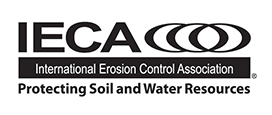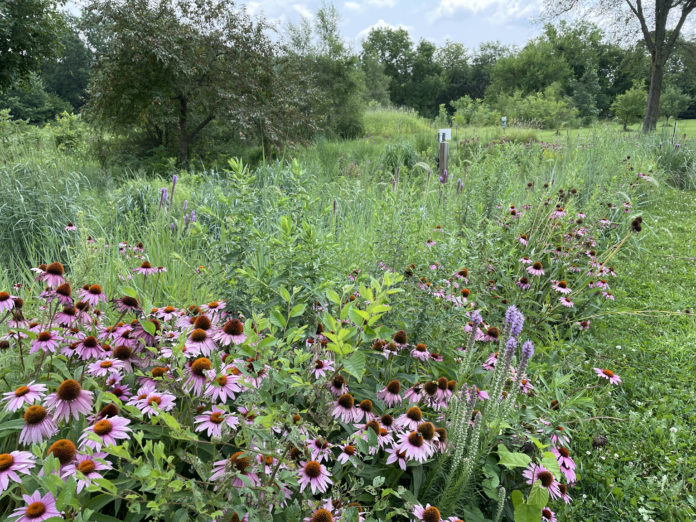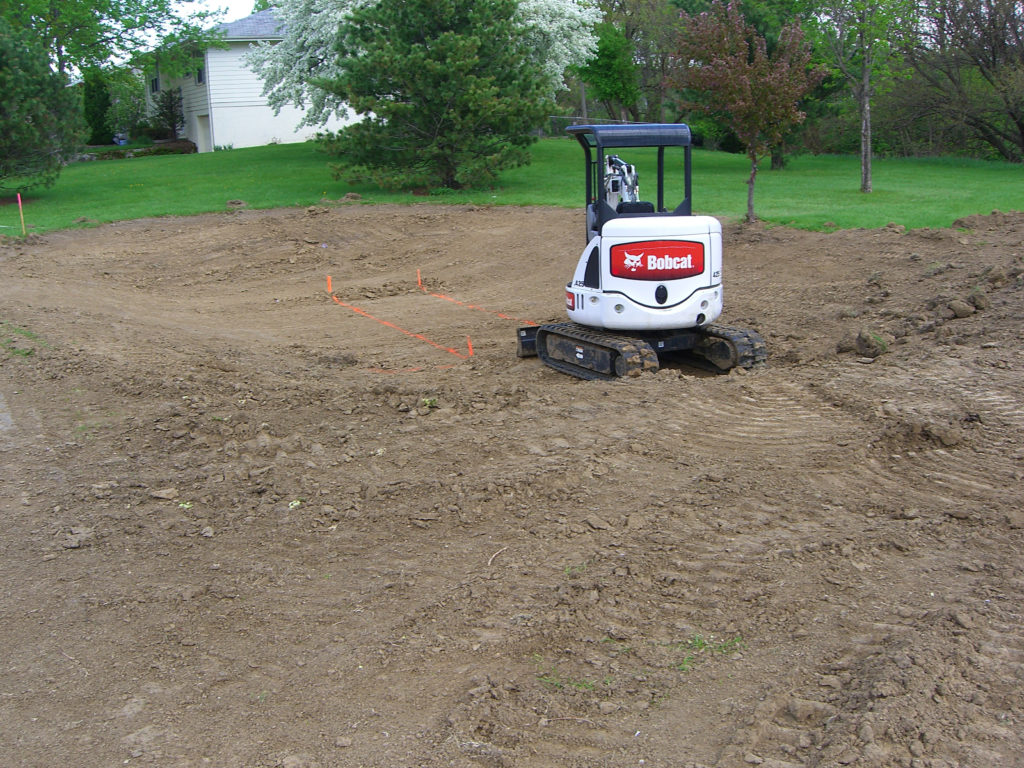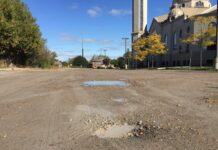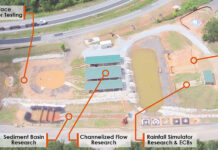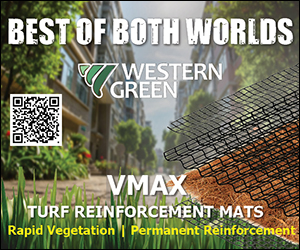By Ted Hartsig, CPSS; Steven Polk, PE
Collection and treatment of stormwater is an exercise of managing imbalanced resources. Urban stormwater runoff focuses increased volumes of water into limited areas where it is expected to be collected and treated. The typical design response to the increased amount of water is to try and balance this system by installing engineered soils and biological systems that nature may or may not be part of a balanced a landscape. As a result, there may be unintended drainage or stormwater treatment problems that require more energy and capital to maintain over time.
Soil is the resource that most directly affects the stormwater management imbalance. Soil is often considered to be a relatively innate mechanical system meant to accept, move and manage large amounts of stormwater and releasing it slowly, removing pollutants along the way. Soil, however, must be recognized for what it is: A living, breathing, dynamic system that can treat stormwater via infiltration into the ground. But it is also a balance of physical structure, dynamic biology and chemistry. This balance is necessary for stormwater management structures and the landscapes surrounding them. Getting this balance correct is what makes stormwater management successful.
Early infiltration design guidance in most regions of the United States required sand to be used as the predominant soil type for stormwater infiltration. The reason was based primarily on “book values” that logically show sand, especially coarse sand, as having high infiltration rates. However, design guidance for stormwater best management practices (BMPs) is changing as more regional policies allow for higher silt and clay (“fines”) content in biofiltration soil mixes (BSM).1 While some regions minimize the allowance for fines in BSM materials based on the potential that fine particles will migrate and clog infiltration filters, other regions are realizing that silts and clays actually help stabilize BSM materials and help maintain consistent infiltration and percolation in stormwater BMPs for longer periods of time.2 Much of this is because of increased biological activity in bioretention stormwater management systems.3
Why Stormwater BMPs Fail
When soil is disturbed, whether by tilling the soil for agriculture, grading the soil for construction or even in blending soils for specialized BSM, the soil structure that holds sand, silt and clay particles together is often broken.4 The resulting separation of silt and clay causes these fine particles to move easily and migrate between sand particles to form clay pans. Similarly, these same fine particles are easily dislodged and eroded from nearby soils that are captured in stormwater BMPs. The result is clogging of the BSM caused by the formation of sediment layers or clay pans. Because clay tends to have more cohesive properties that bind small particles together, silt is often more easily transported to form the blocking layers. Discussion with Steven Polk, PE, with Stormwater STL LLC in St. Louis, Missouri a company that inspects and maintains hundreds of stormwater BMPs quarterly, revealed that poor soil mixtures and clogging near the surface are the main causes of bioretention basin failure. Subsequent repair of these systems can run into tens of thousands of dollars. Often, the repair is not permanent and will need to be repaired again in the future.
In contrast to sand-based BSM, soil with strong aggregated peds that are often a congregation of sand, silt and clay bound together by organic “glues,” chemical bonding, and physical adhesion are effective for stormwater management. Well-aggregated soils provide effective macroporosity through which water readily flows while also retaining micropores that hold water for plant growth and chemical exchange sites, thereby effectively removing pollutants from the water. These types of soils are maintained through active plant growth and the activities of soil microflora (bacteria and fungi) and fauna (earthworms, nematodes, insects, and more). In fact, it is the dynamic actions of plant root growth, microbial transformations and turbidation of soil by worms and other small animals that contribute to healthy soil and the development of macropores that facilitate infiltration and percolation of water. This healthy soil retains an effective stormwater management performance for several years after BMP construction.3,5,6
Maximizing the “Bio” in Bioretention
As described above, an essential factor for successful BSM in stormwater BMPs is healthy soil biology. This is not limited to plants, but also the microbial communities of the soil itself. Sand-based BSM provides the primary function of moving water into the soil but it relies on the addition of compost and possibly other performance enhancing devices to filter pollutants from incoming stormwater.7 However, studies conducted in the states of Washington and California have shown that the inclusion of too much compost in BSM often results in the release of phosphorus, nitrogen and copper into the stormwater effluent passing through the BSM.8 The growth and development of natural microorganisms, particularly fungi, will produce natural organic matter, and their activity will serve to reduce the concentrations of both organic and metal contaminants in stormwater runoff.9
Plants and soil microorganisms depend on each other for coexistence. Healthy vegetation releases polysaccharides into the soil that stimulate microbial growth and activity. Abundant microbes, in turn, provide plants with the nutrients they need to grow and be healthy. Soil bacteria and fungi also release compounds that build soil structure and promote water movement into and through the soil while also retaining important nutrients. Plants and microbes will break down organic contaminants while often assimilating and immobilizing inorganic metals, binding them long-term to soil organic matter. To make all this work, clays and silts help create the environment where soil microbes can flourish.
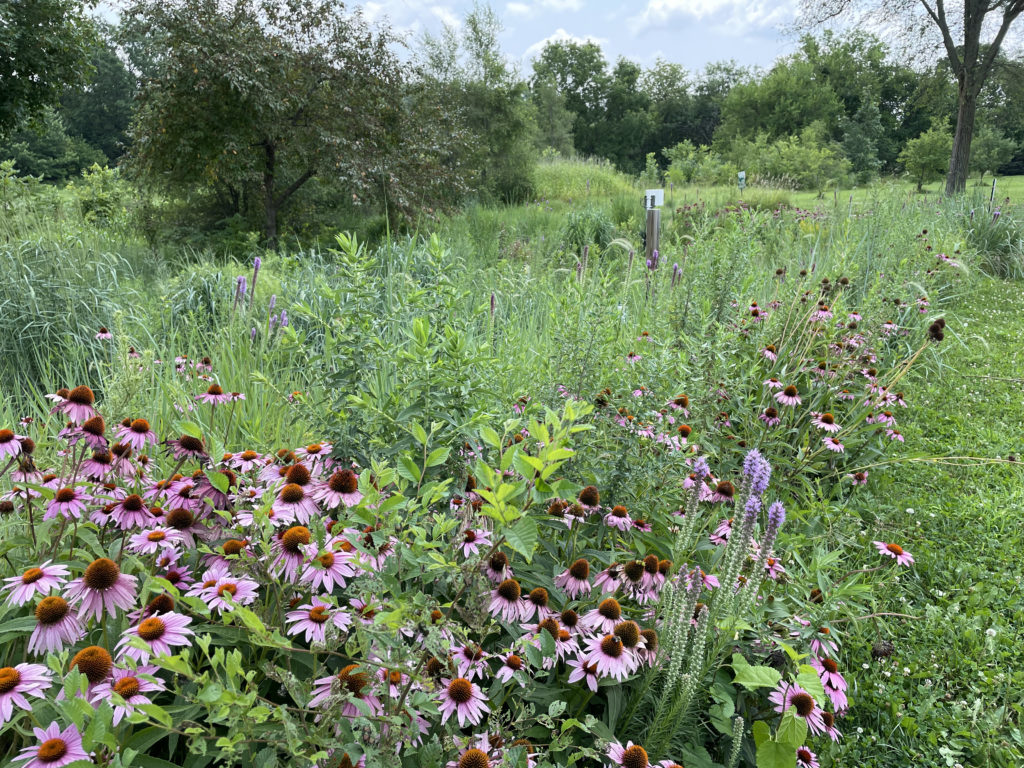
Chemistry of a Healthy BSM
The chemical nature of the healthy BSM and a successful stormwater BMP is sometimes the most difficult to understand and manage. Healthy BSM will have slightly acidic to near-neutral pH and low salt content. The BSM should be relatively low in macronutrients (primarily nitrogen and phosphorus) because most nutrients needed for sustaining plants in the stormwater BMP are often inherent in the soil or in stormwater influent. An important part of the soil chemistry and success of the BMP is the ability of the soil to absorb nutrients as well as contaminants. This is often reflected in a measure of the soil’s cation exchange capacity (CEC). Fine-textured soils have higher CEC than do coarse, sandier soils. To make up for the low CEC of sandy soils, compost, peat or, recently, coconut coir fiber, is added to improve the CEC of sand-based BSM. These organic materials will decompose with time and must be replenished as part of the BMP maintenance program.
Balanced Soil and Successful BMPs
The “right” soil for stormwater BMPs will vary by location, as every site is different. Every stormwater BMP has different functional and environmental needs requiring the appropriate soil to support effective stormwater management. The typical engineered, sand-based soil recommended or required by many stormwater management programs is essentially a “one-size-fits-all” approach that often fails.
Every stormwater BMP has different functional and environmental needs requiring the appropriate soil that is necessary to support effective stormwater management. The use of more natural soils, especially if soils don’t have to be blended, screened or pulverized works very well. If there is a “happy medium” for stormwater bioretention, soils with sandy loam to loam texture—typically about 45% to 70% sand, 10% to 25% clay, and 15% to 35% silt—work very well. The sandy loam to loam texture has sufficient clay and silt to provide soil chemical and biological stability, yet enough sand to allow adequate drainage.
Designing BSM that has physical, biological and chemical balance is appropriate for the local environment and the proper function of each stormwater management system. This will require many designers to rethink the design of stormwater BMPs to include more natural, native soils, accept finer-textured soils and consider plants and soil biology more.
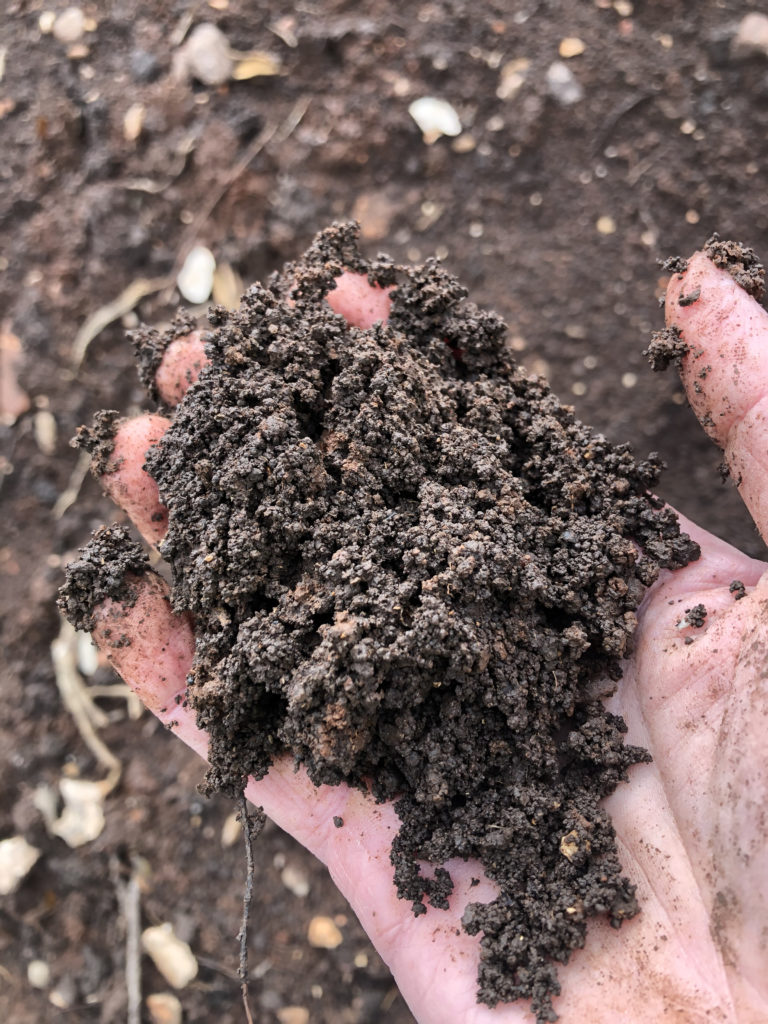
References
1) Hodgins B., Seipp B. 2018. Bioretention System Design Specifications & “Performance Enhancing Devices.” Center for Watershed Protection. Washington, D.C.
2) Shanstrom N. 2016. How Sandy Does Bioretention Soil Need to Be? Deeproot Blog Entry. April 16, 2016.
3) Ayers E. 2009. Pedogenesis in Rain Gardens: The Role of Earthworms and Other Organisms in Long Term Soil Development. Ph.D. Dissertation. University of Maryland.
4) USDA-NRCS (U.S. Department of Agriculture – Natural Resources Conservation Service). 2010. Soil Glue. https://www.nrcs.usda.gov/Internet/FSE_DOCUMENTS/nrcs142p2_051280.pdf.
5) Skorobogatov A. (2014). Hydrological Functionality of Plants and Its Application to Stormwater Management (Unpublished master’s thesis). University of Calgary, Calgary, AB.
6) Mehring A., Levin L. 2015. Potential Roles of Soil Fauna in Improving the Efficiency of Rain Gardens Used as Natural Stormwater Treatment Systems. Journal of Applied Ecology 52:1445-1454.
7) Hodgins B., Seipp B. 2018.
8) Herrera Environmental Consultants. 2020. Bioretention Media Blends to Improve Stormwater Treatment: Final Phase of Study to Develop New Specifications. Final Report. King County, Washington Department of Natural Resources and Parks. January 2020.
9) McIntyre J., Davis J., Kappenberger T. 2020. Plant and Fungi Amendments to Bioretention for Pollutant Reduction over Time. Final Report to Washington State Department of Ecology Stormwater Action Monitoring. September 25, 2020.
Special thanks to Lillian Stroeker (Olsson) for assistance with research of stormwater BMP soils
About the Experts
Ted Hartsig, CPSS, is a senior soil scientist with Olsson, Inc. in Overland Park, Kansas. His 37 years of experience have been focused on soil design and restoration for environmental and stormwater management in urban and rural locations throughout the U.S.
Steven Polk, PE, is a professional engineer and owner of Stormwater STL, a firm specializing in stormwater BMP management and compliance, offering inspection, maintenance, native plant stewardship, testing, construction and consulting expertise for stormwater quality systems in St. Louis and throughout the Midwest U.S.
